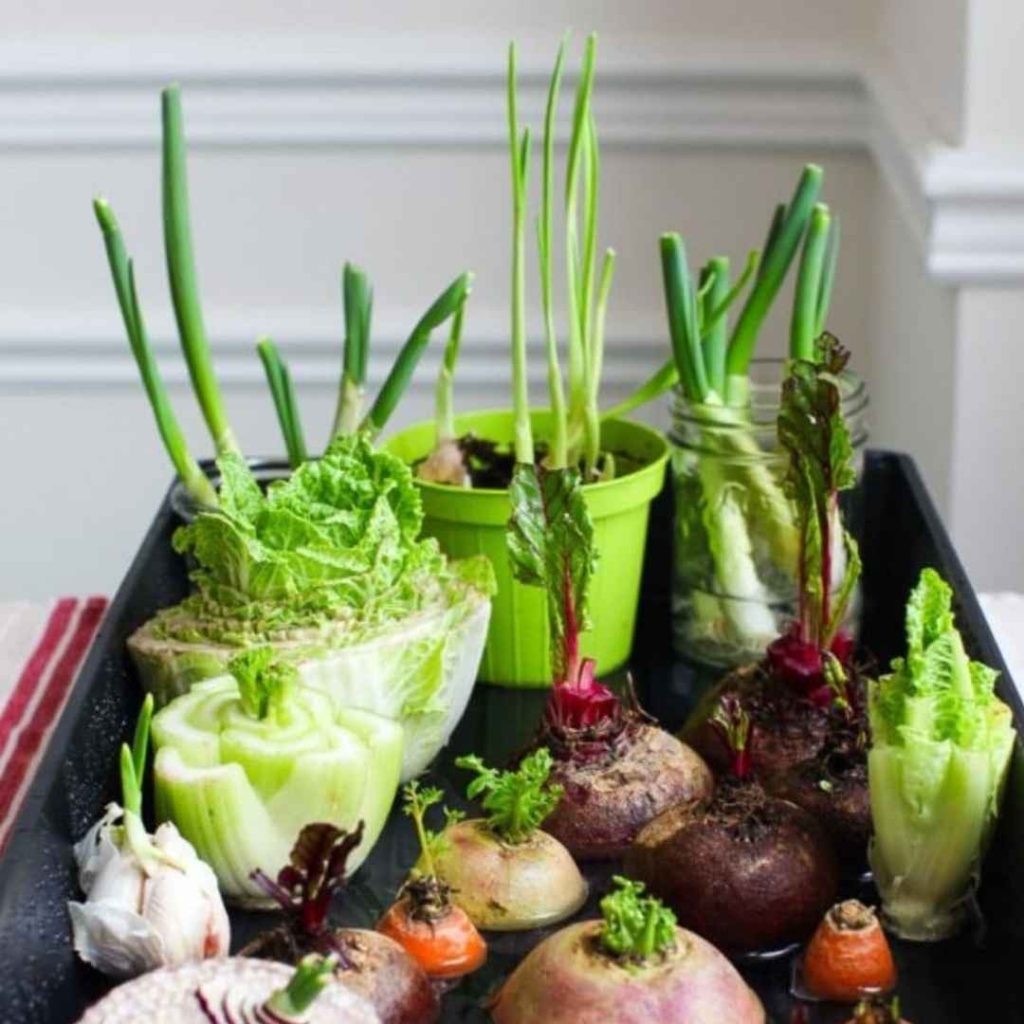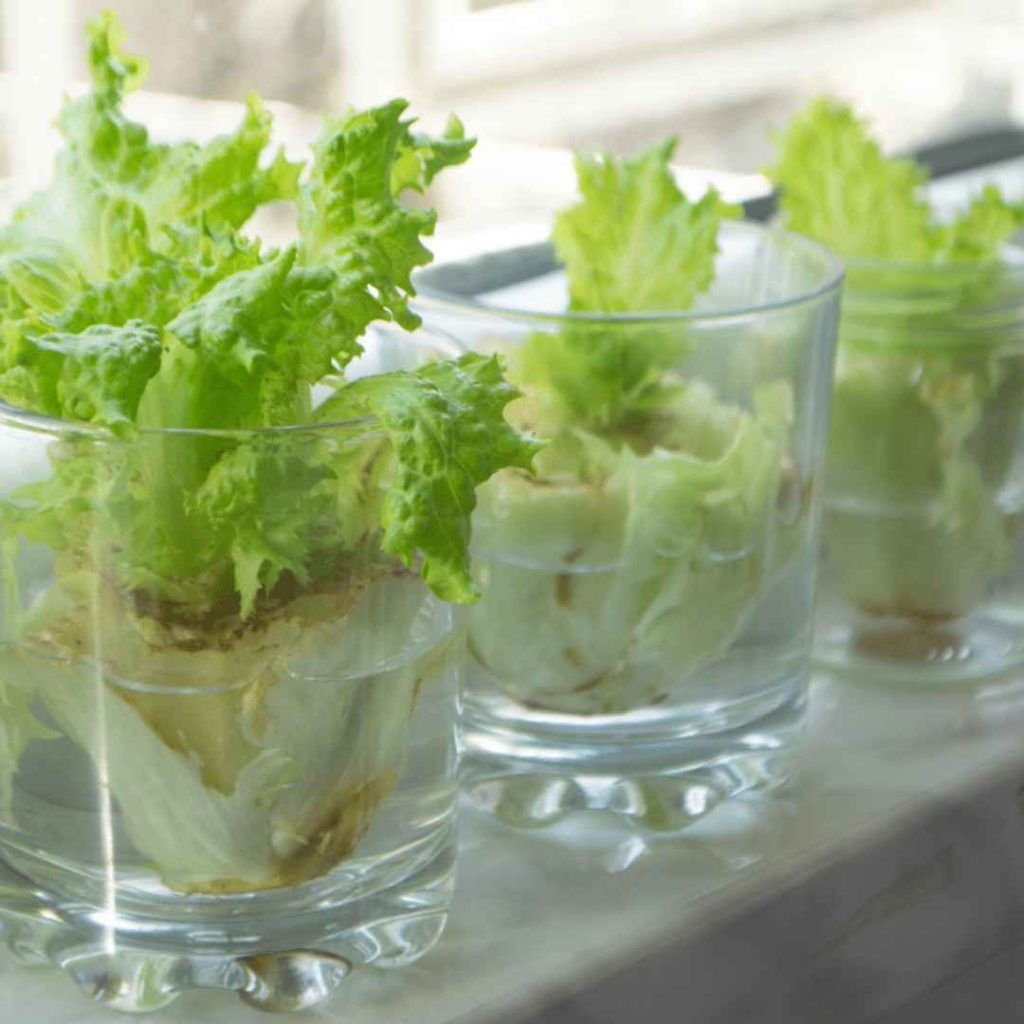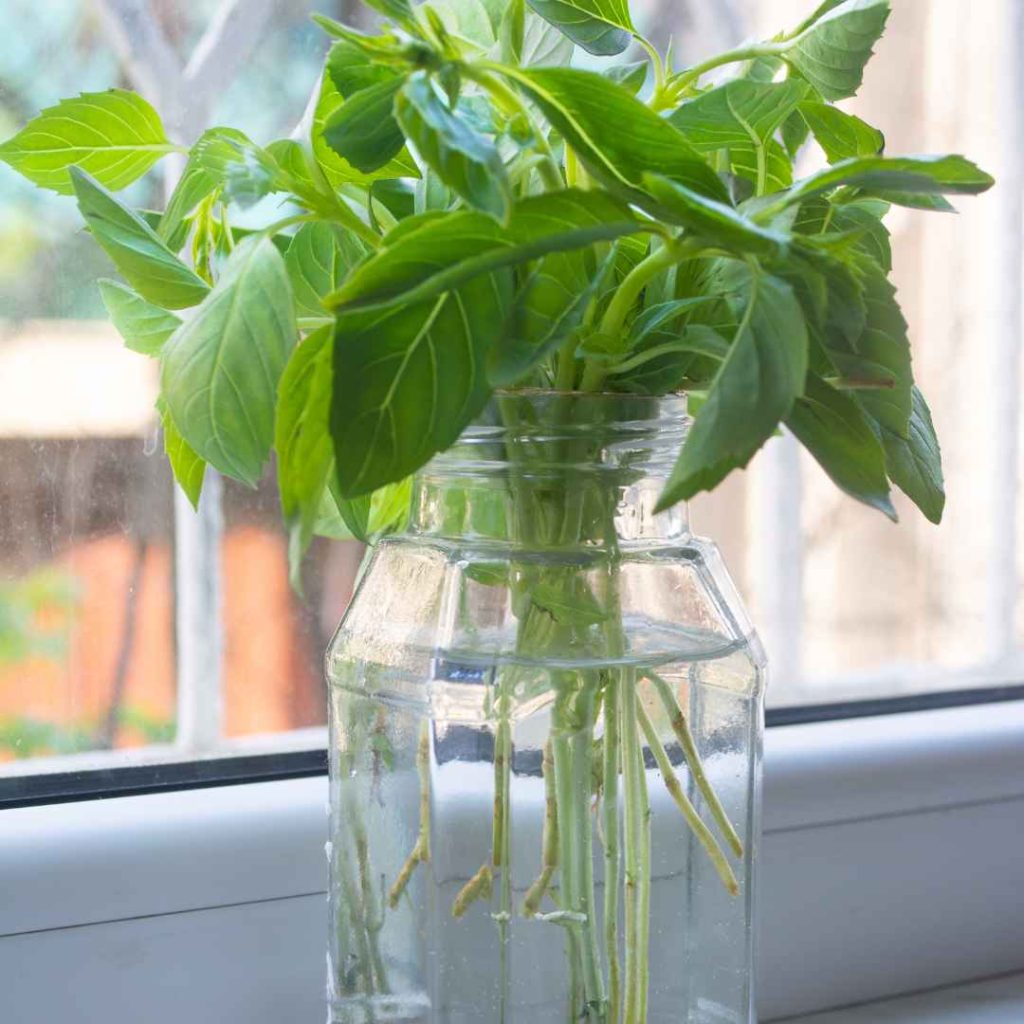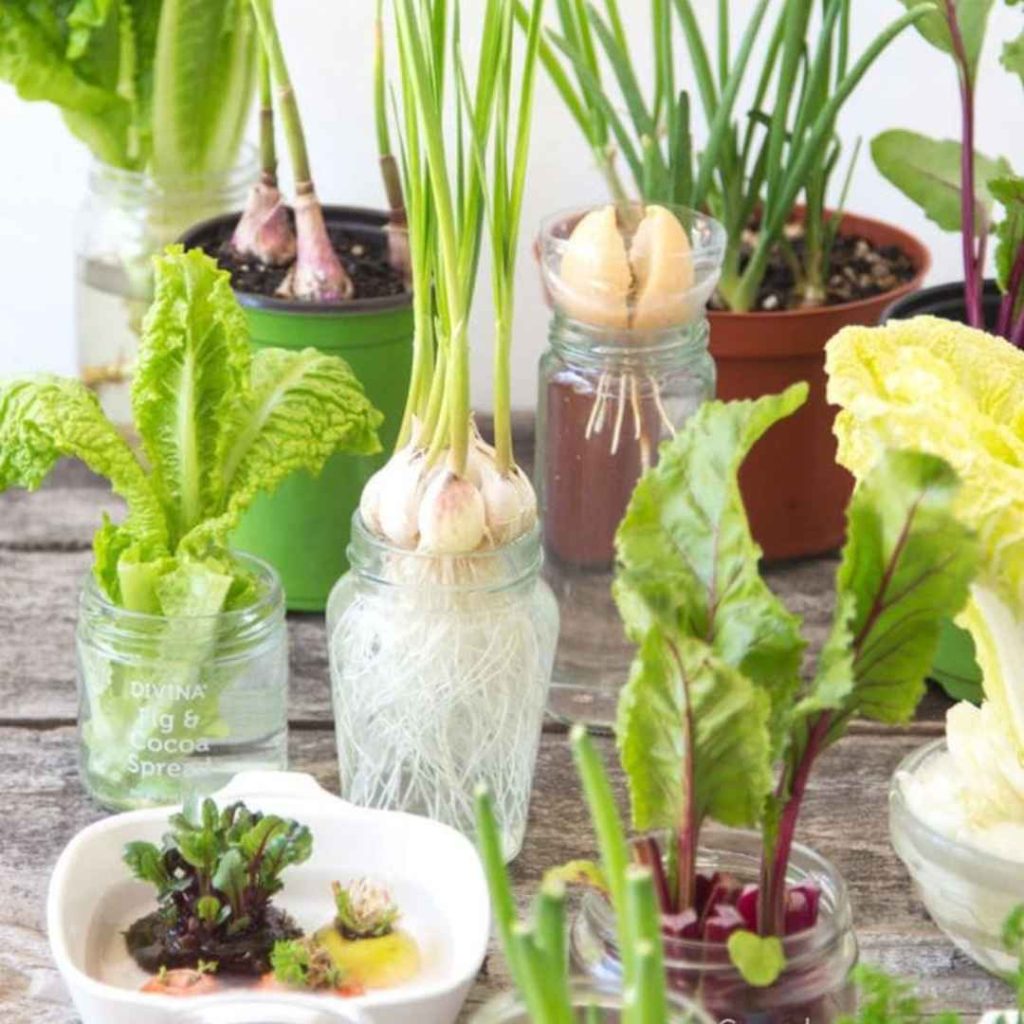Regrowing kitchen scraps in your fall landscaping is a fantastic way to cut down on trash, save assets, and have a steady supply of fresh vegetables. With possible preparation and attention, you can produce a lot of standard kitchen waste in your autumn yard and reap a plentiful crop of tasty and wholesome produce.
Selecting The Correct Scraps:
While many kitchen scraps may be regrown, not all of them will be able to. Several well-liked choices for regrowing are: Lettuce and other green vegetables Carrots, radishes, green onions, and stalks Beets with herbs such as rosemary, cilantro, and basil

Processing Your Scraps:
You must correctly organize your kitchen scraps before you can begin regenerating them. Following are a few pointers:
Verify that the leftovers are wholesome and healthy.
Steer clear of decaying, microbial, or wilting scraps.
Make sure to properly slice the scraps. For instance, you may cut forward lettuce and medicinal plants to promote fresh development, and you can clip the bulbs of green onions and carrots closest to the root of the vine.
To avoid harming the scraps, utilize a razor-sharp sterile blade or pair of cutters.
Regrowing Your Scraps:
It’s time to begin replenishing your scraps after you’ve prepped them. Following are a few broad guidelines:
Put the leftovers in a vessel filled with sand or liquid. While certain wastes, like lettuce and medicinal plants, need substrate, others, like vegetables and onion bulbs, are capable of being grown back in freshwater.
Make sure there is just enough sunlight. While some scraps can withstand direct sunshine, the most require indirect, ambient illumination.
Don’t dry out the scraps. Ensure that the substrate or fluid is continuously damp but not soggy. After the scraps have taken root and are flourishing, bury them in your backyard.

Advice For Particular Scraps:
The following are precise guidelines for regrowing typical culinary waste:
Leafy greens, such as lettuce, may be grown again in either ground or freshwater. All you have to do is prune the foliage, and fresh foliage will appear.
Celery: Slice off the starting point of the celery bulb and put it in a water-filled vessel. Fresh stalks are going to expand while roots will form.
Green onions: Put the green onions in a vessel containing water after cutting them slightly higher than the ground level of the vine. There will be new development and the development of roots.
Radishes: You can replant radishes when submerged or in ground. All you have to do is prune the foliage, and fresh vegetation will appear.

How To Take Care Of Your Regrown Scraps:
After being regrown and moved into your outdoor space, your scraps will require consistent attention in order to flourish. Here Are a Few Pointers:
Give them frequent hydration. Ensure that the soil is constantly damp but not soggy.
Make sure there is just enough light. While some regrown scraps can withstand direct sunshine, the majority favor radiant, diffused sunlight.
Give nutrients to them. To encourage optimal expansion and formation, use an agricultural fertilizer that is regulated.
Watch out for illnesses and parasites. Check your greenery frequently for indications of infestations or illnesses, and act quickly to address any issues you find.

Regrowing Kitchen Wastes Offers a Number Of Advantages, Such As The Following:
Decreased Trash: Regrowing household leftovers helps save supplies and lessens the quantity of garbage that ends up in dumpsters.
Budget Friendly: You can reduce your purchasing expenses by cultivating your own produce.
Nutritious Vegetables: A steady supply of wholesome, agricultural products can be obtained from regrown waste.
Regrowing your own produce can help you become more self-sufficient and less dependent on commercial farming.
Frequently Asked Questions And Responses:
When regrowing kitchen leftovers, you might come across the following issues, along with particular fixes:
Insects: To manage unwanted visitors, use natural approaches like diatomaceous earth (DEA) or neem oil.
Infections: For avoidance of ailments, practice alternate cultivation and good hygiene.
Deficits In Certain Nutrients: To encourage optimal expansion and improvement, utilize an additive that is appropriate.
Temperatures: Keep your crops safe from damaging conditions such as scorching temperatures or cold.
In Summary:
Regrowing kitchen scraps is an enjoyable and fulfilling method to cut trash, preserve cash, and take pleasure in a steady supply of nutritious food. Many typical culinary scraps can be grown again in your autumnal gardening with minimal preparation and attention.
You can reap a plentiful crop of scrumptious and nourishing foodstuffs according to the advice and recommendations provided in this piece of content. Have fun with your landscaping!
